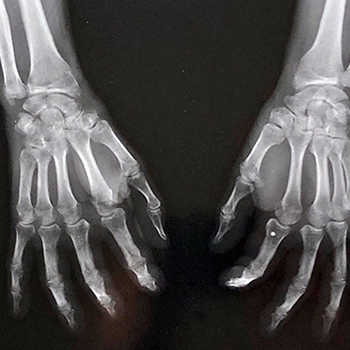Keywords
RS3PE, paraneoplastic, adenocarcinoma, cecum
Abstract
Remitting seronegative symmetrical synovitis with pitting oedema (RS3PE) is a rare syndrome that affects the elderly. Although the aetiology is not fully understood, it has been related to multiple diseases including cancer. We present the case of an 80-year-old man with a full spectrum of signs and symptoms compatible with RS3PE: sudden onset of bilateral polyarthralgia of the metacarpophalangeal and proximal interphalangeal joints, oedema of the dorsum of the hands, increased inflammatory markers and seronegative rheumatoid factor. After a 5-day course of corticotherapy, the patient became asymptomatic although maintaining a mild anaemia. During a search for the underlying cause of the RS3PE, an early stage adenocarcinoma of the caecum was diagnosed and surgically removed. No further treatment was performed and after 3 years of follow-up the patient remains without evidence of either paraneoplastic RS3PE or cancer.
References

Views: 2486
HTML downloads: 524
PDF downloads: 704
Published:
2018-11-22
Issue:
Vol 5 No 12
(view)










